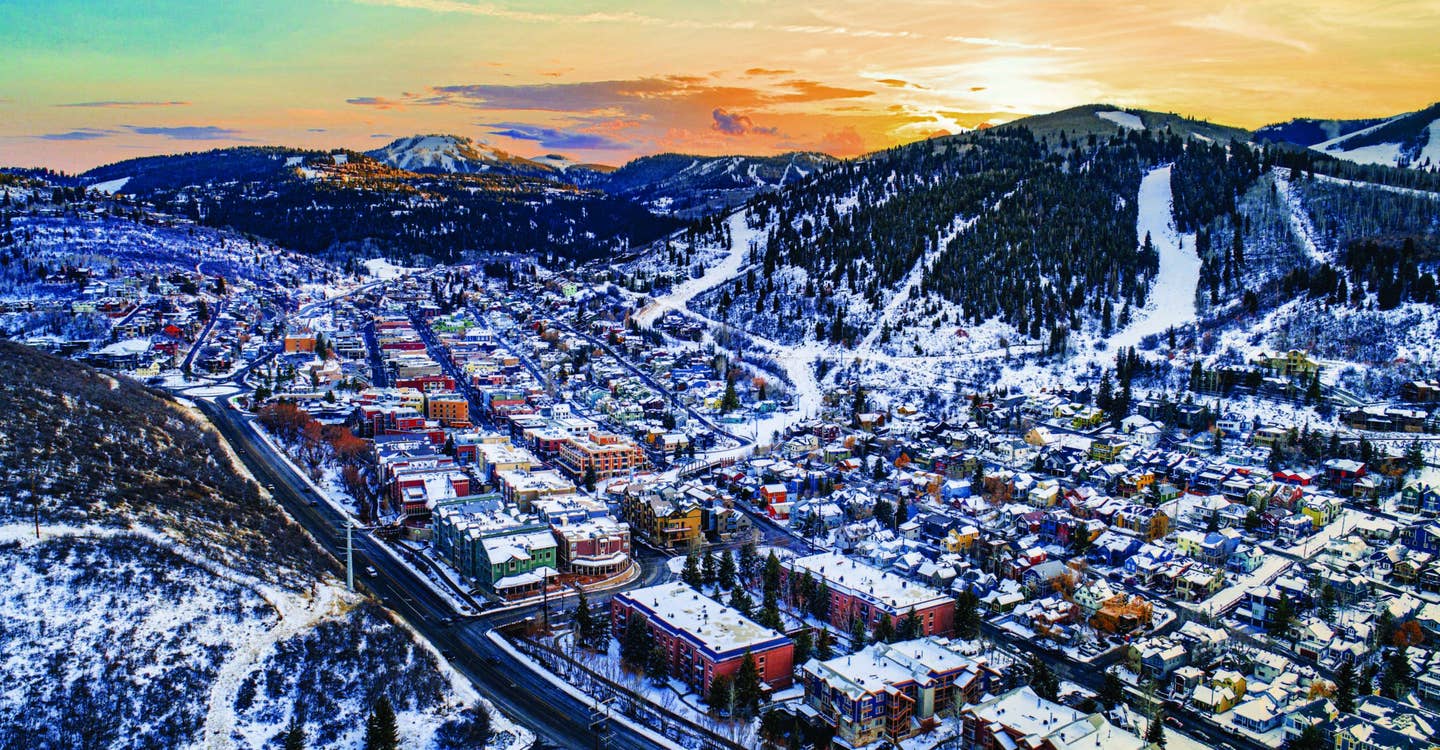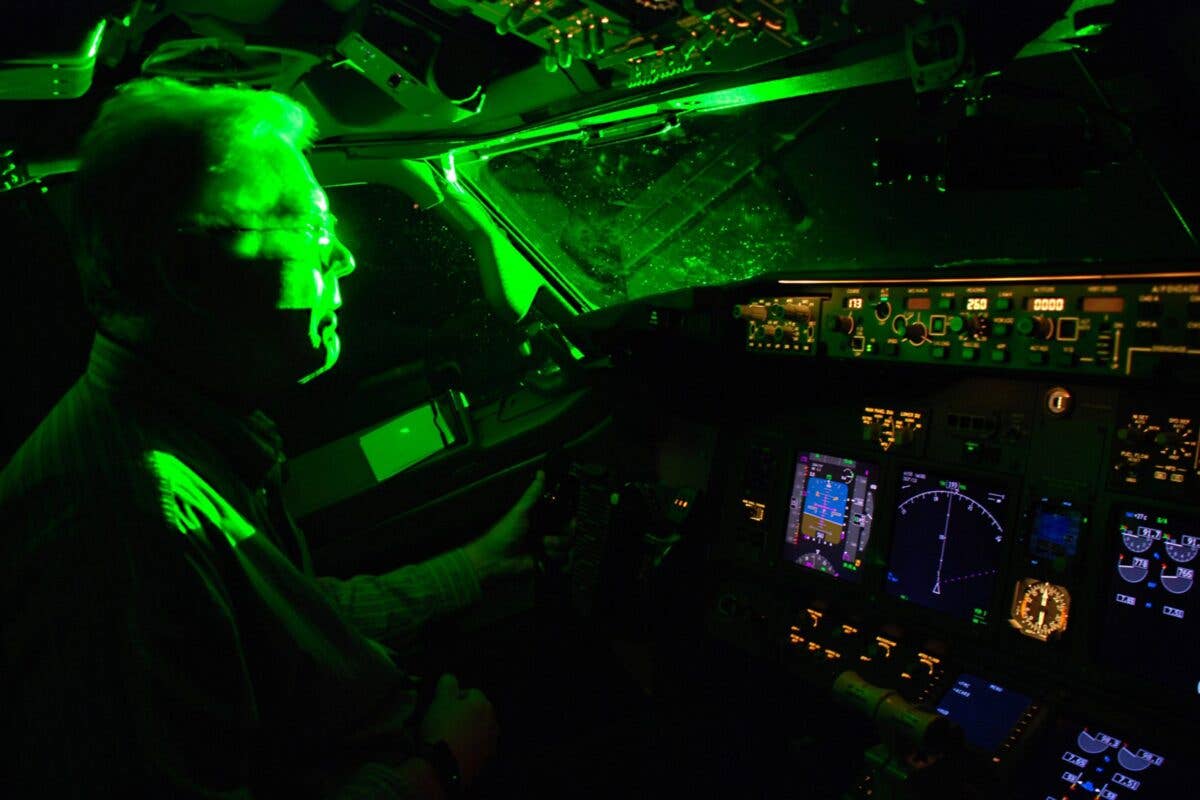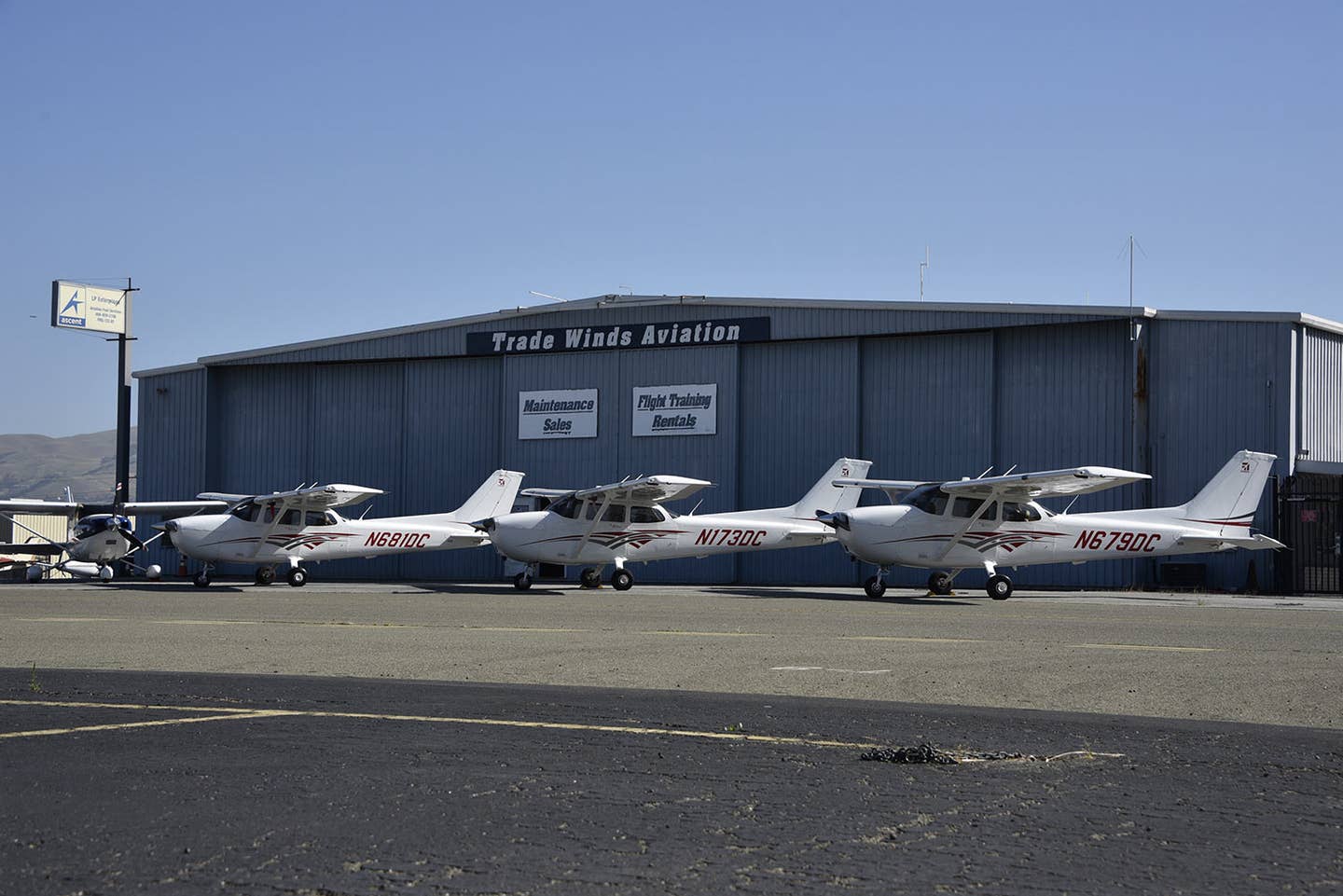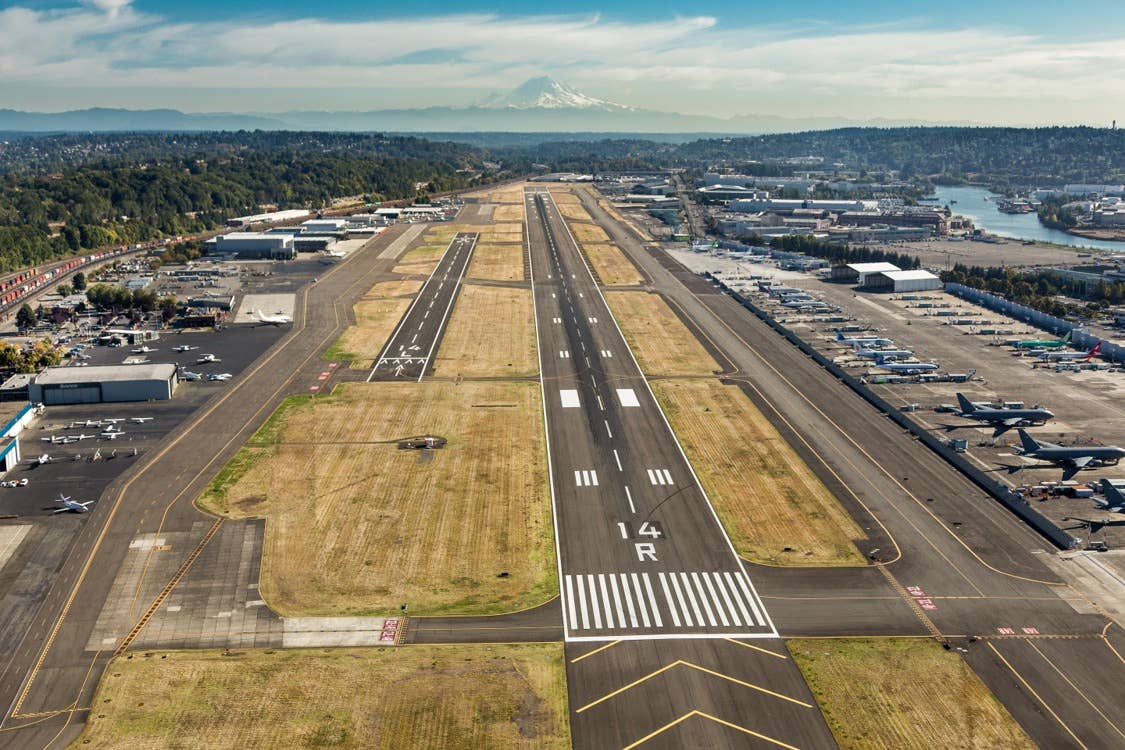Getting Spring Creek Airpark Back on the Charts
A new pilot becomes an airport owner and helps spearhead its resurgence, piece by piece.
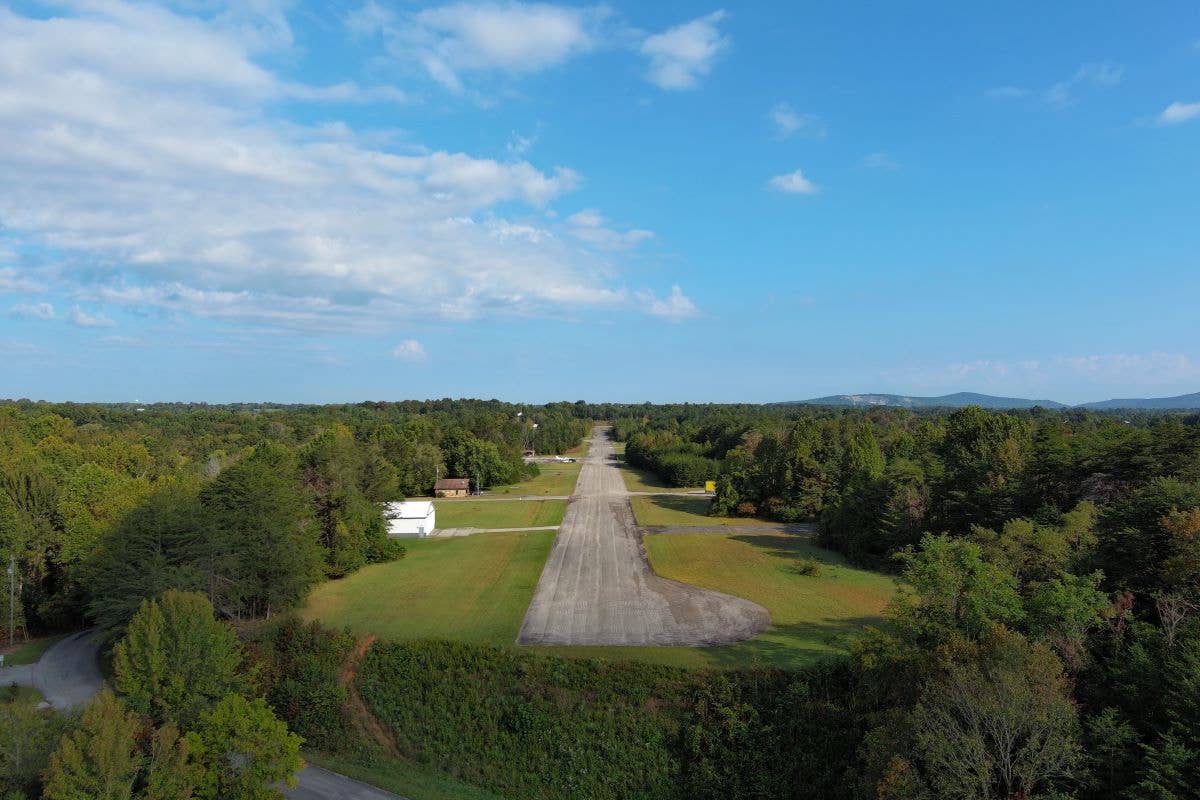
Currently there are about 10 pilots who regularly fly into Spring Creek Airport, a private facility. [Courtesy: Savana Culver Barnes]
Savana Culver Barnes—like many others—became inspired to begin flight training after seeing aircraft at her local airport. Unlike most others, however, that airport happened to be in her Kentucky backyard.
“We bought our lake house with our best friends in 2019 but have been going down there [Dale Hollow Lake] since 2017. There was no phone service there, and we didn’t even know that the [Spring Creek Airpark (7KY4) in Albany, Kentucky] runway was a runway at all when we first started visiting,” Barnes said.
“I’ll never forget the time that we pulled onto the runway, which we thought was a large asphalt area/road for the houses, because that’s how we would get to our road and driveway with our boats. There was a massive airplane that had just landed.”
Seeing the Pilatus PC-12 was inspiration for Barnes, an entrepreneur in the healthcare industry, for what her future could look like. The time savings of general aviation were a significant catalyst for her journey into the skies.
“Since we were going down to the lake every weekend in the summer and it’s a two-and-a-half-hour drive from Bardstown, Kentucky, one way, I told my husband that I was going to learn how to fly,” she said. “Literally the next Monday, I went up to Cardinal Wings Aviation in Louisville and started taking flying lessons.”
Barnes is the first to admit that it took a while to get warmed up to flying in a single engine piston. But she earned her private pilot certificate in nine months and then completed her instrument training shortly thereafter. Around this time, she purchased a 1977 Beechcraft A36 Bonanza.
“When we bought the runway in 2021, we knew it was in some sort of bad escrow and there’s a lot of history with the airport,” she said. “[Prior to us] there were several other owners, and at one point it received federal funding. That was the last time it was paved, in the early 2000s. Something must have happened, because the state took the airport over. And in November 2021, the master commissioner in Albany, Kentucky, partnered with an auction company and auctioned the runway and several other bad status lots off.”
The future of the runway hung in the balance. Would it continue to operate following the well-attended auction had bidders fighting over the property that was within walking distance of a large lake that straddles the Kentucky/Tennessee border?
“Whenever I found out that the airport was going to come up for sale, I was like, ‘Oh, I did not just go through this entire flight training process and bought an airplane for someone to buy this runway,’” Barnes said.
She and her neighbor, the owner of the PC-12, decided to team up and buy the runway together. Their plans hit turbulence early on, though.
“Everything was going great the day of the auction, and the auctioneer left the runway to be purchased last,” she said. “So, we sat together the whole day waiting on the runway to go. And there was this young guy sitting at the front who we had never seen before. He was bidding and buying everything, and I knew he was going to be competition.
“I’ll never forget when we started bidding on the runway, because my number was 44, which was great because four is my lucky number. I was ecstatic and knew we were going to get this. But that guy was still bidding against us, so I yelled at him, asking him what he was doing. He said he was a pilot and I told him that we were, too.”
The heckling worked, as he walked back to join the fellow aviators mid-auction. After a quick exchange of pleasantries, the duo became a trio. An LLC was formed shortly after the purchase, of which all three pilots are equal partners.
“But then, that is when the drama started,” Barnes said. “We were told at the auction that the parcel we were purchasing was the whole thing. But we didn’t know that the runway, when it was built in the 1980s, was actually only 2,200 feet long. So, we only got that much of the 3,300-foot-long runway and were told that the other piece of land had been bought that day and was for sale [at an asking price of twice what the other portion of runway was purchased for].”
After some back and forth, they settled on a mutually agreeable number. Then they learned that another acquisition was needed in order to add the last 300 feet of the runway. This final 5 acres was tied up in a 50-acre parcel that was also sold that day.
“A year or so after the auction, the gentleman heard that we were ready to buy the last piece of property we needed,” she said. “All said and done, we have bought the runway for a very decent price. The airport is truly making a comeback, and I am excited to see what the next five or 10 years hold because it has so much potential.”
Hoping that the runway wasn’t turned over to a party unwelcoming to aviation, she wanted the other auctioned property to be purchased by pilots.
“There are about 10 of us right now that use the airport regularly during the summer,” she said. “And it’s definitely coming back as an aviation place because I actually had several lots that I purchased with the runway and sold them to people that were in aviation. That was the goal, since I did not want to sell the lots to someone who would just put a camper or a house on them. Two of the lots are going to have four hangars with apartments above them and the other .9 acres is currently for sale.”
Now that the dust has settled from the whirlwind of activity required to piece together three properties, the group can properly think about the future of Spring Creek Airport. Their main goal recently has been to get the airport back on the charts as a private facility.
“It took me a while to get in contact with the right departments [at the FAA] to help me start the process of getting the airport back on the charts,” she said. “Once the application was complete, the next part was the hardest part for me, which was being patient. [After] the application was submitted for about a year and no contact from the FAA, I got an email contact from the representative who was working my case. Once we got in contact, and it was on his priority list, the process moved quicker, and it was on the charts five months later. As of the navigation cycle that was updated on September 5, the airport is officially back on the sectional as 7KY4.”
Barnes and the other owners are exploring the possibility of receiving state or federal discretionary funds to invest in the airport’s infrastructure.
“The runway needs to be repaved, that’s for sure,” she said. “There are a lot of avenues that I want to explore to see what we potentially could get before we go investing a lot of money. We got a quote from an asphalt company to see what it would cost to repave the runway, and we are looking at anywhere from $500,000 to $700,000. With the airport the way it is, that’s not something that me and the partners want to invest in until it’s no longer usable. Then that’s something that we’re going to have to talk about more.”

Sign-up for newsletters & special offers!
Get the latest FLYING stories & special offers delivered directly to your inbox

